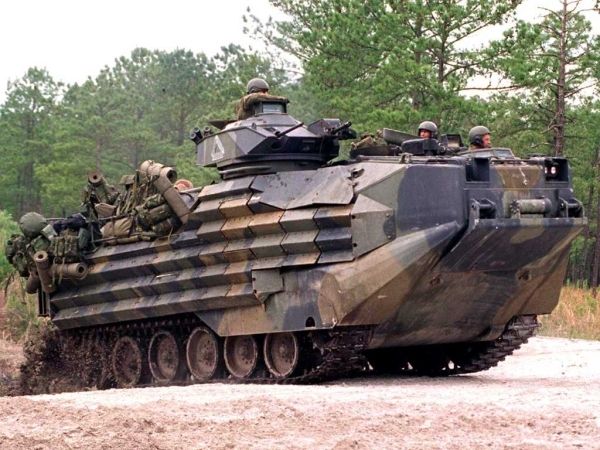Combat-development and integration officials and technological experts are looking to ever-evolving advancements in technology to enhance the Corps’ ability to conduct amphibious operations in the 21st century.
These plans include procuring the right ship-to-shore connectors for amphibious operations and improving armored ground mobility so infantry units can close on an objective from the sea with greater protection and lethality.
The air cushioned landing craft, the LCAC, will be eventually be replaced with the Ship to Shore Connector (SSC), a more capable air cushioned craft. A potential vehicle being explored is the Ultra-Heavy Amphibious Connector (UHAC), which operates on water and land with captive air cell treads. A half-scale model is undergoing testing and a full sized version has the potential to lift three times as much as the SSC with a range of over 200 nautical miles.
The Corps is also seeking ideas from industry to develop a family of systems capable of delivering heavy loads, such as several main battle tanks, as well as smaller loads such as an armored combat vehicle, from amphibious ships to shore at distances of over 100 nautical miles and at speeds of up to 25 knots.
To tackle the problem of mobility once close to shore and inland, the Corps is also developing a wheeled amphibious combat vehicle that, once ashore, can move Marines to their objectives with greater speed, lethality and protection than the Corps’ current tracked Amphibious Assault Vehicle.
“The ACV’s ability to operate in loose sand, snow, mud, and (its) ability to climb grades will be superior to the current AAV,” said Col. Christopher Woodbridge, the Corps’ lead for the Ground Combat /Tactical Vehicle Strategy planning team.
Along with better mobility and vehicle suspension than the tracked vehicle, the wheeled ACV has the ability to move out of a kill zone even after losing a wheel to a blast.
“One of the things we found in Iraq and Afghanistan was that our (seven-ton tactical trucks), which weren’t specifically built for IEDs, did much better than our other vehicles because it had such higher ground clearance,” said Brig. Gen. William Mullen, director, Capabilities Development Directorate, in a video interview published in April 2014.
“It’s going to be lethal, more lethal. It’s going to be faster; the troops inside are going to be better protected. That’s why we are going after the ACV.”
According to Woodbridge, the Corps can expect to see fielded ACVs in 2017, with an initial operating capability in 2020. Until the ACVs are fielded, the Corps plans to sustain and upgrade a number of its tracked AAVs. This upgrade program will extend the AAV’s service life through 2035.










